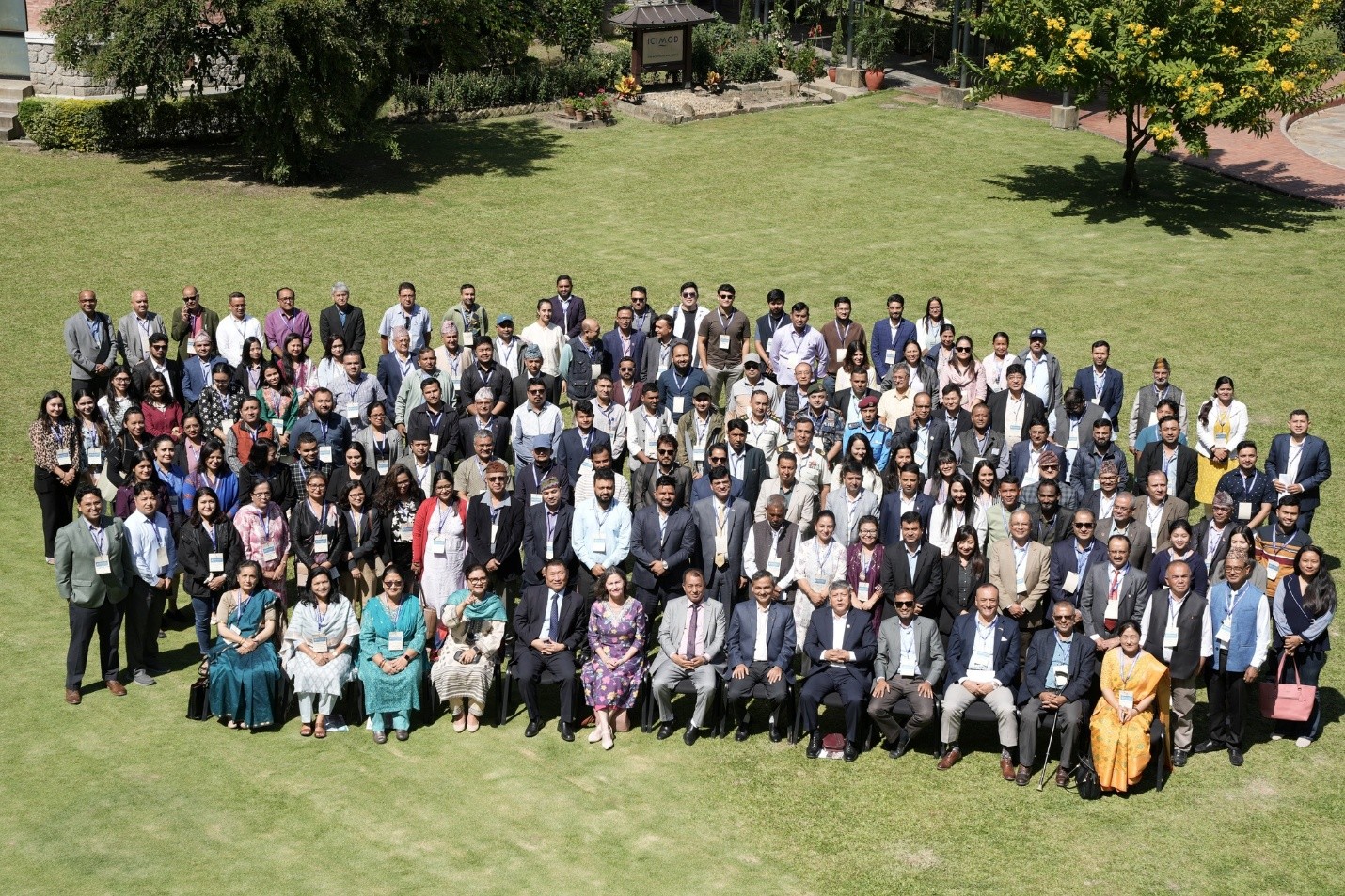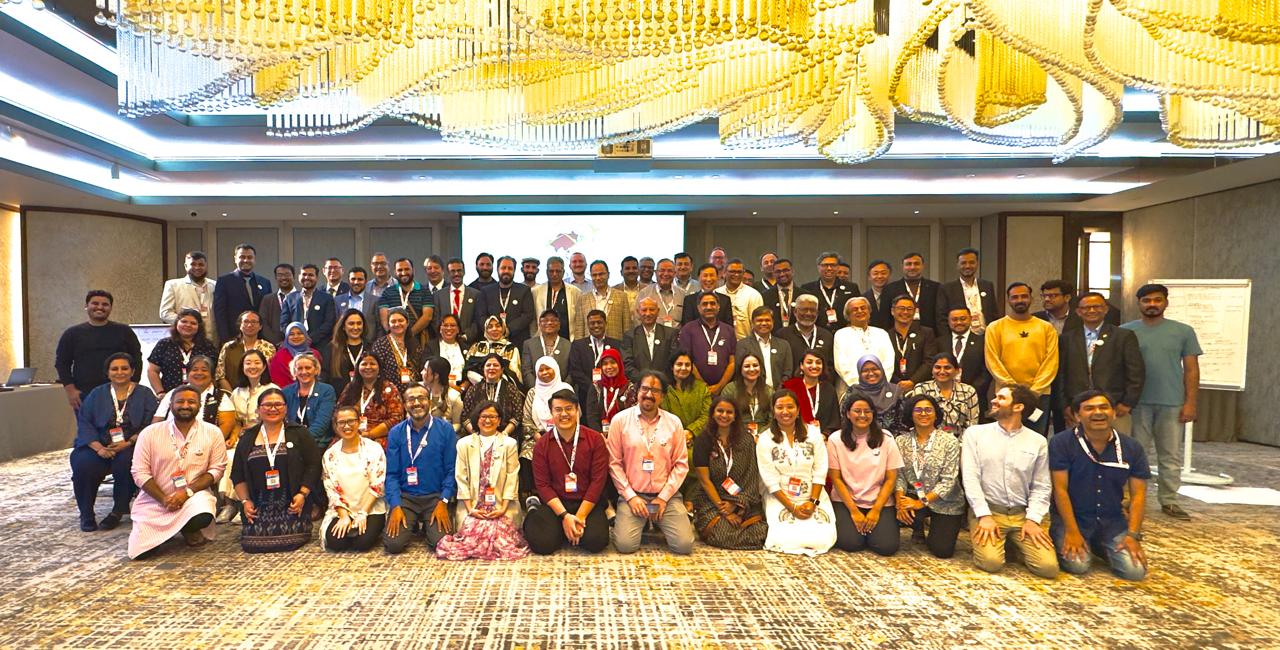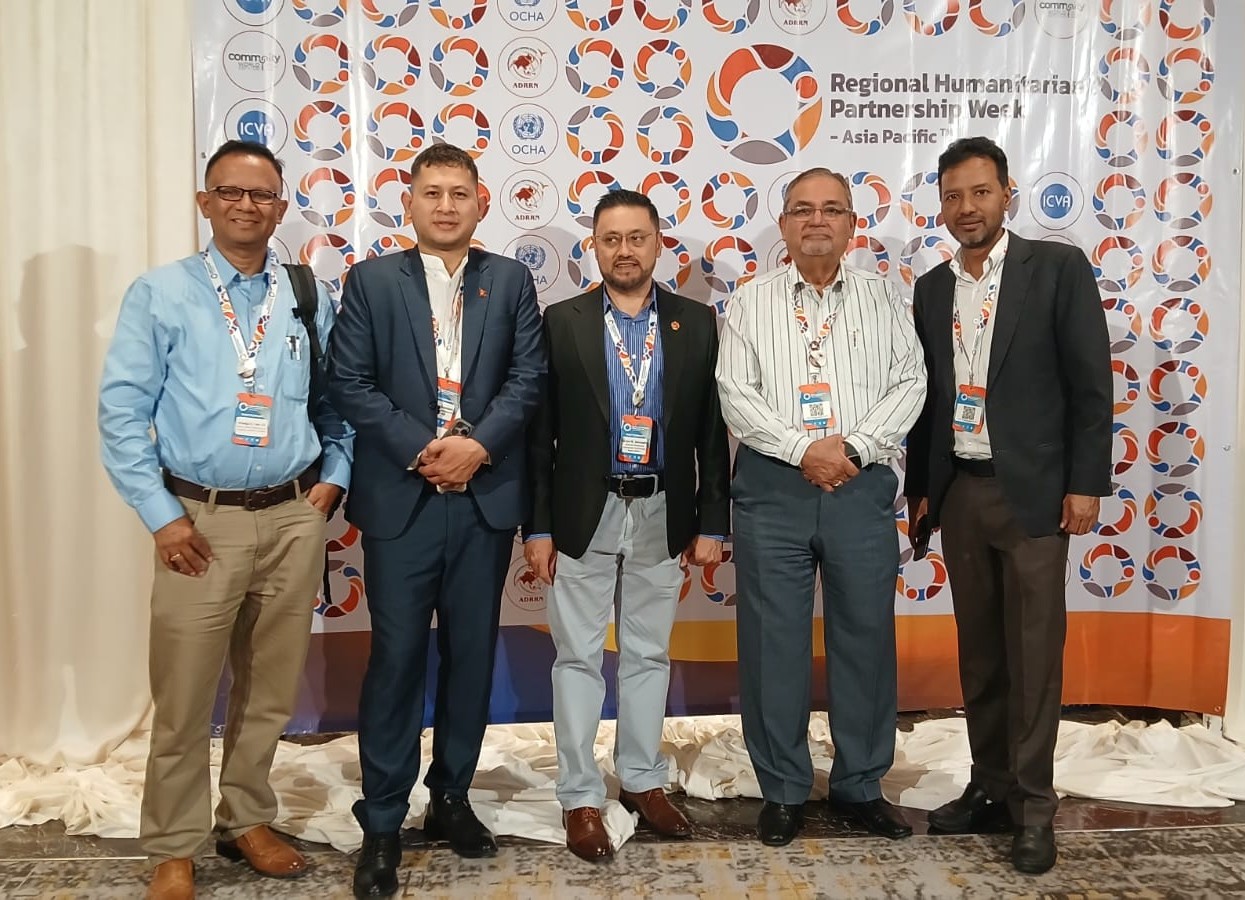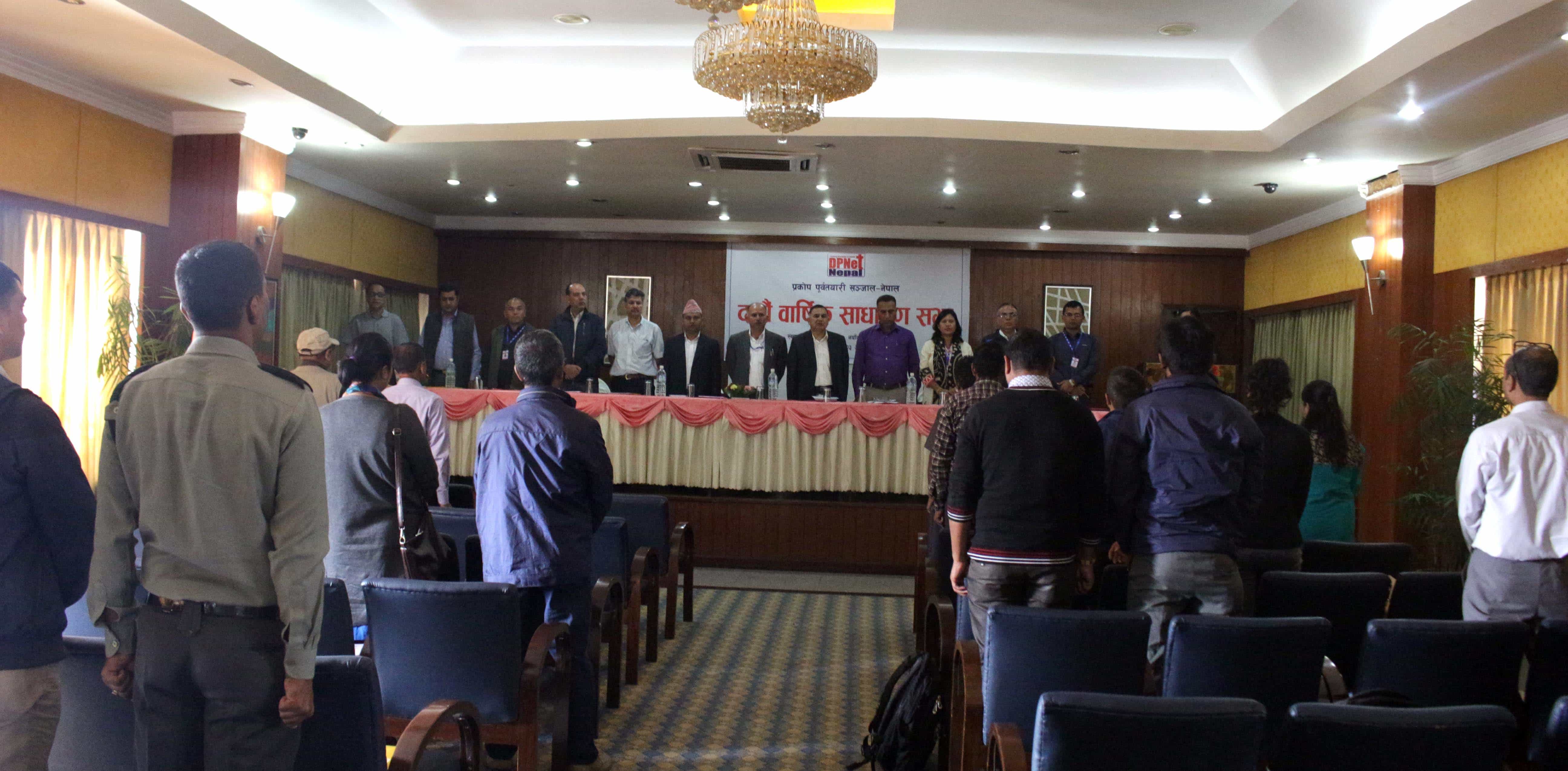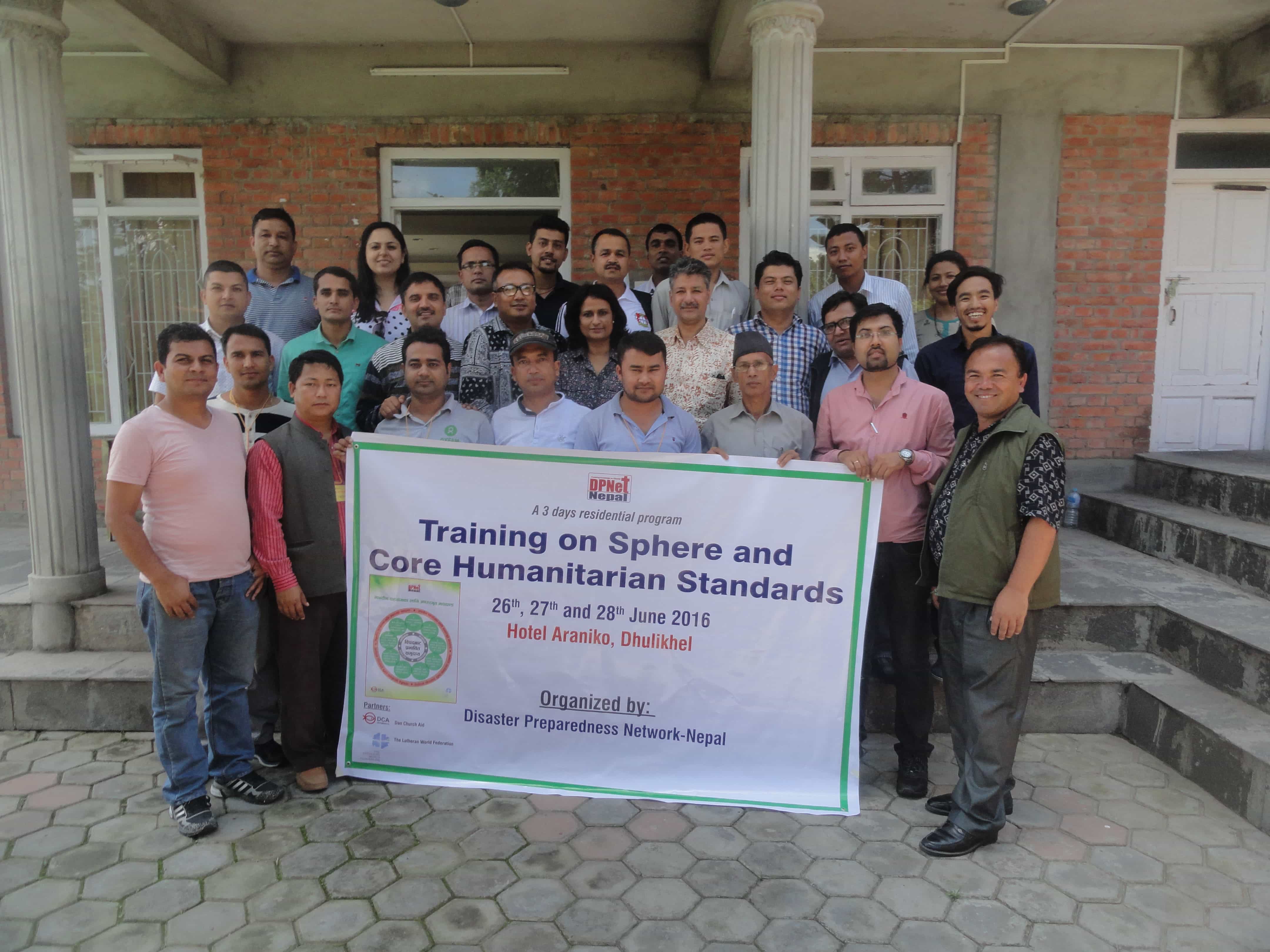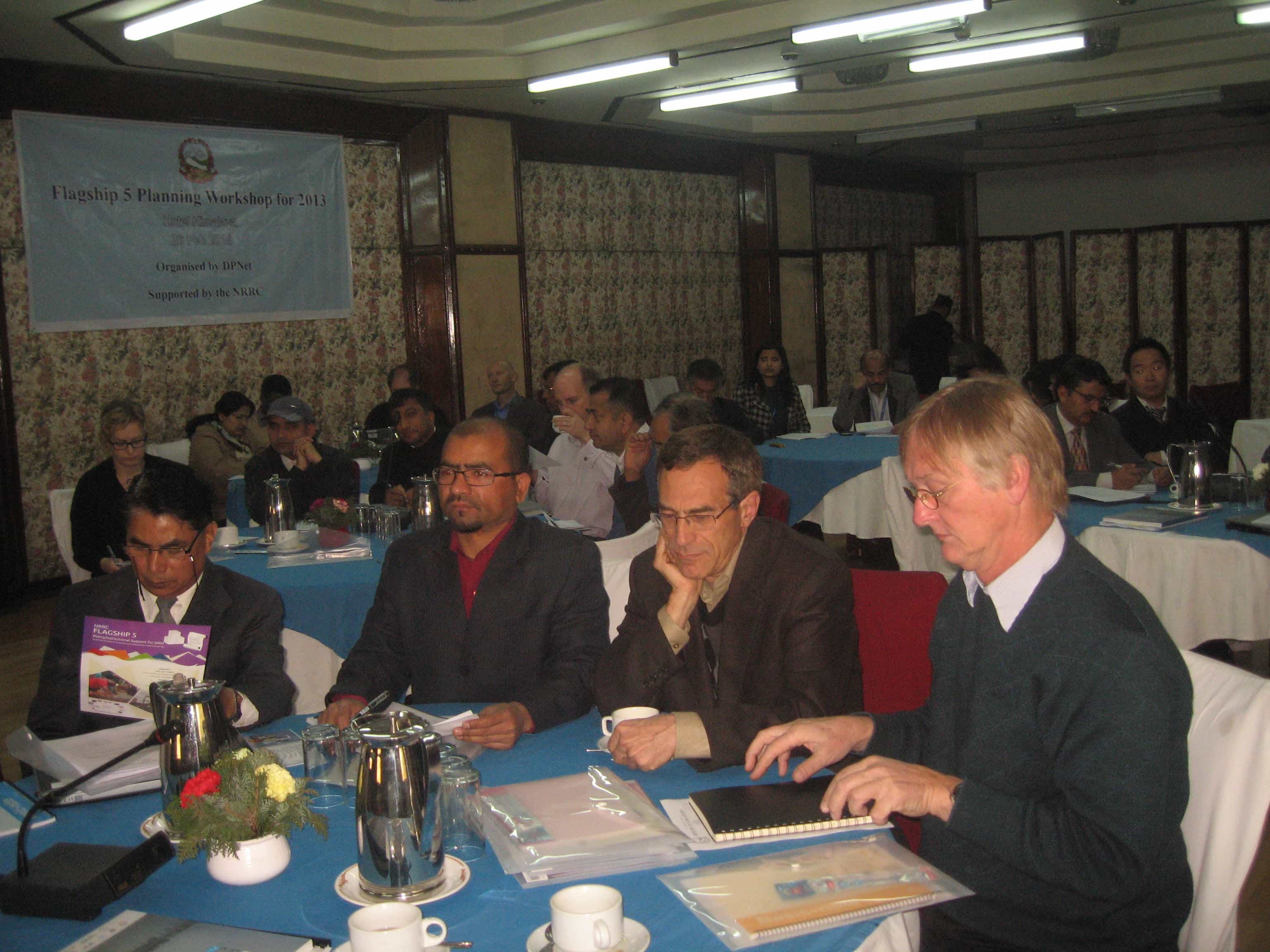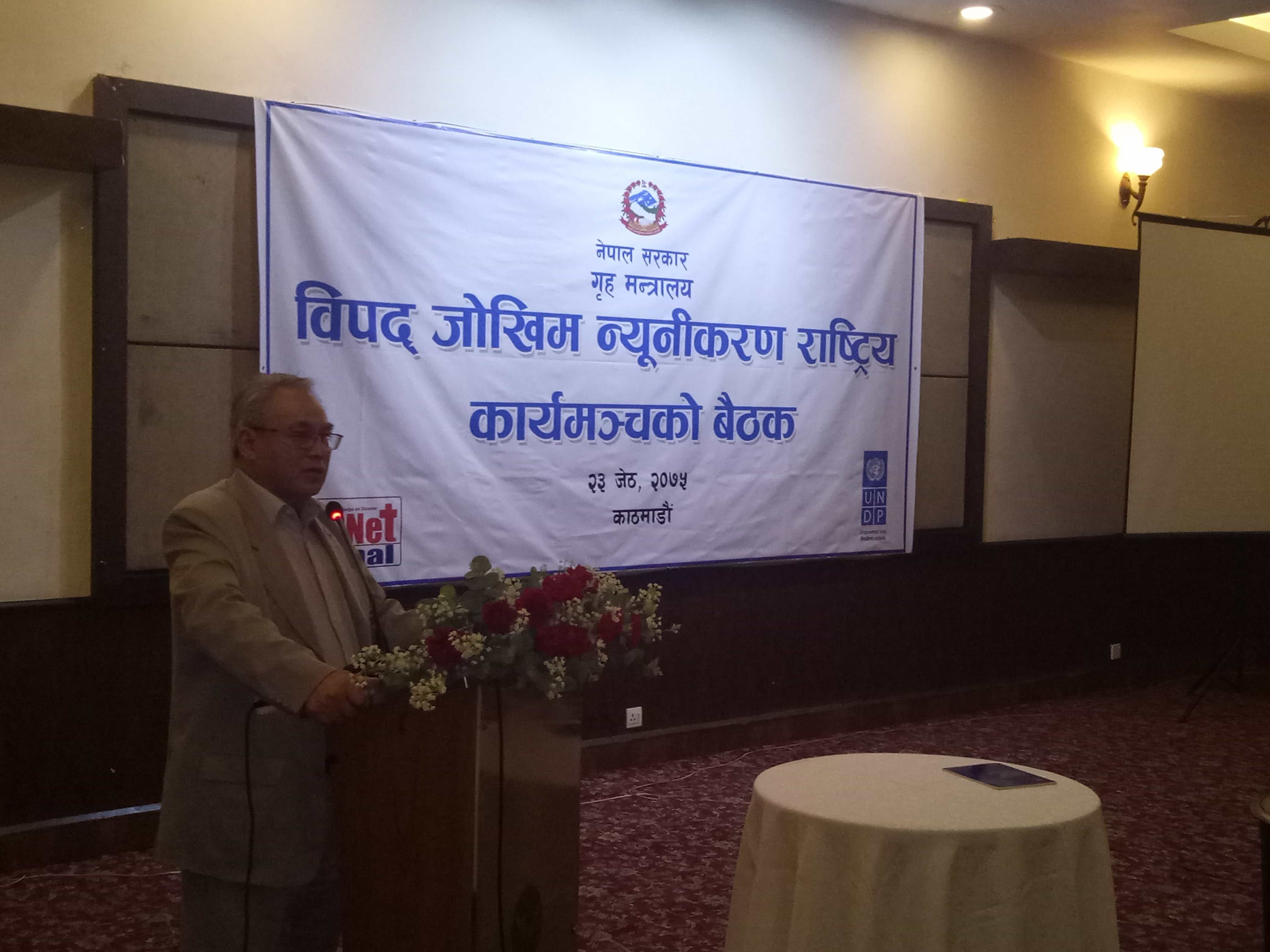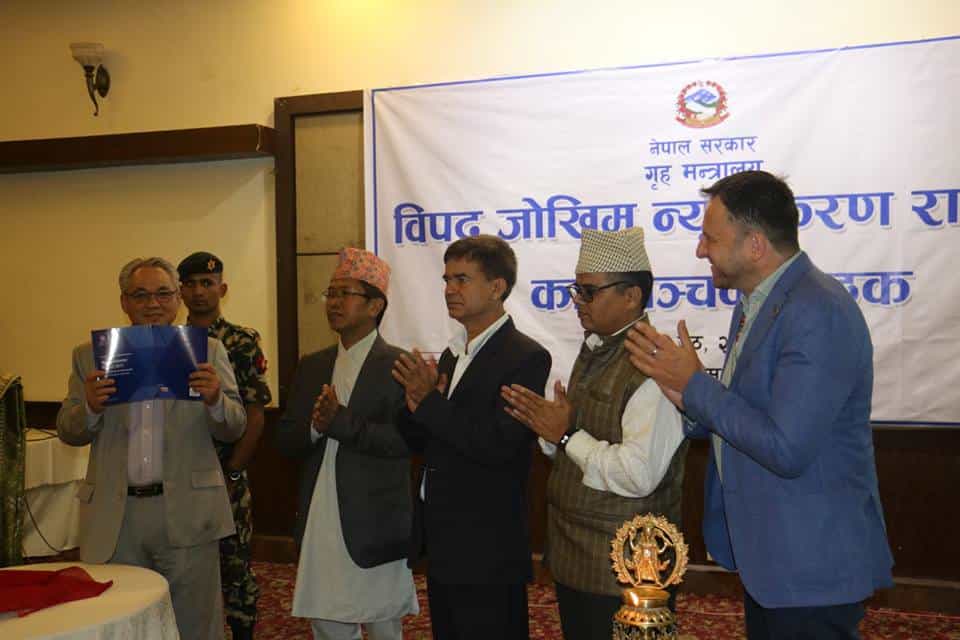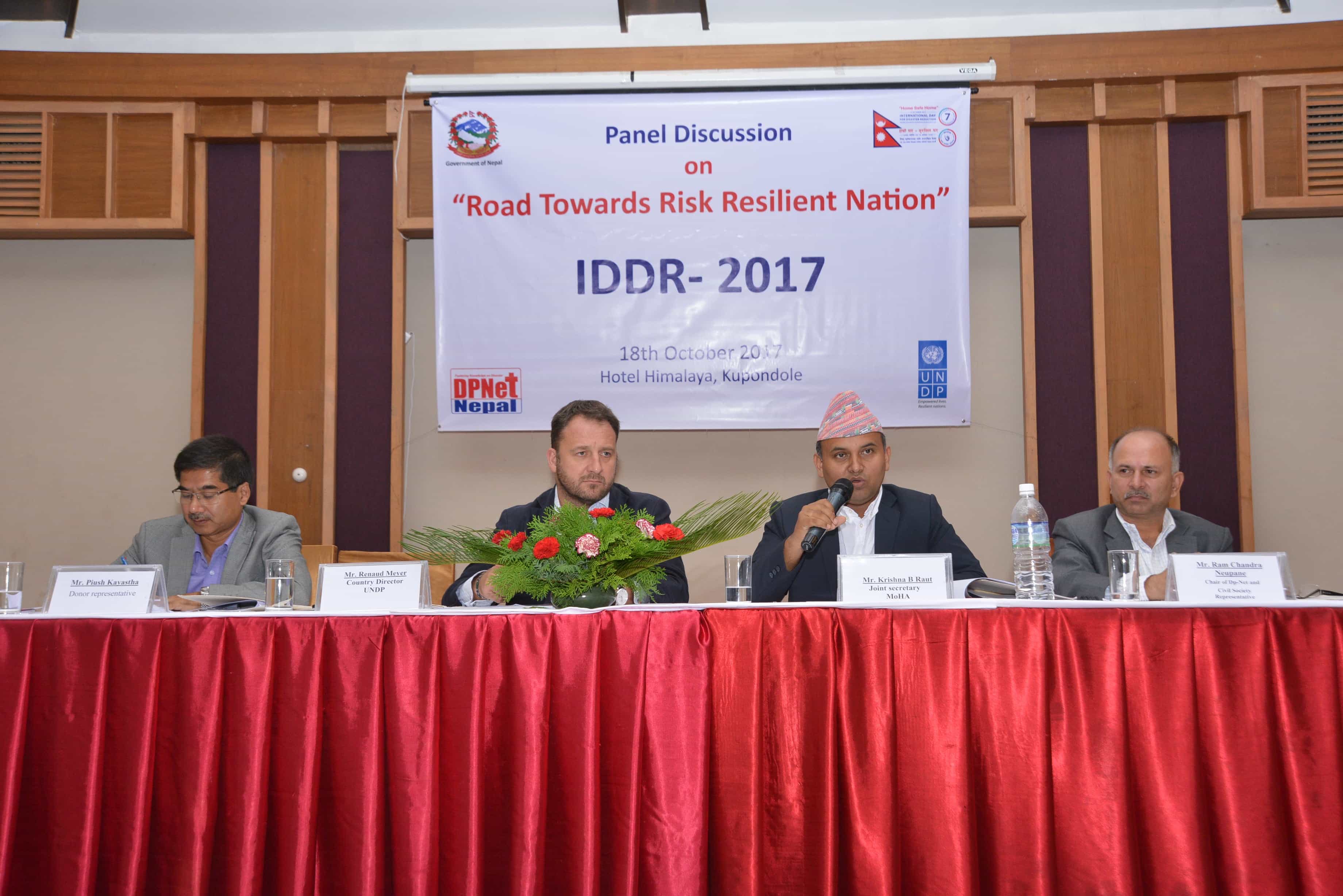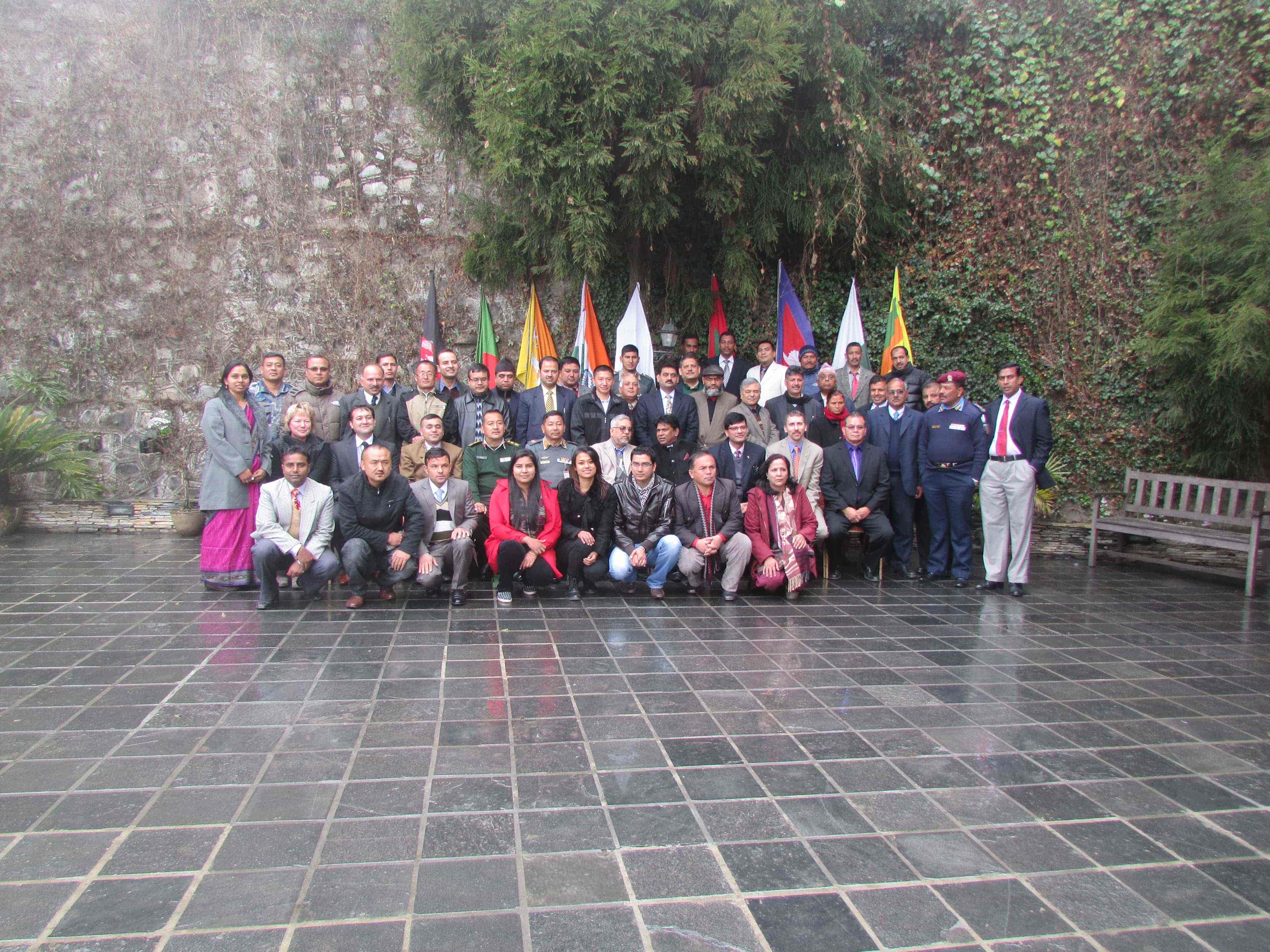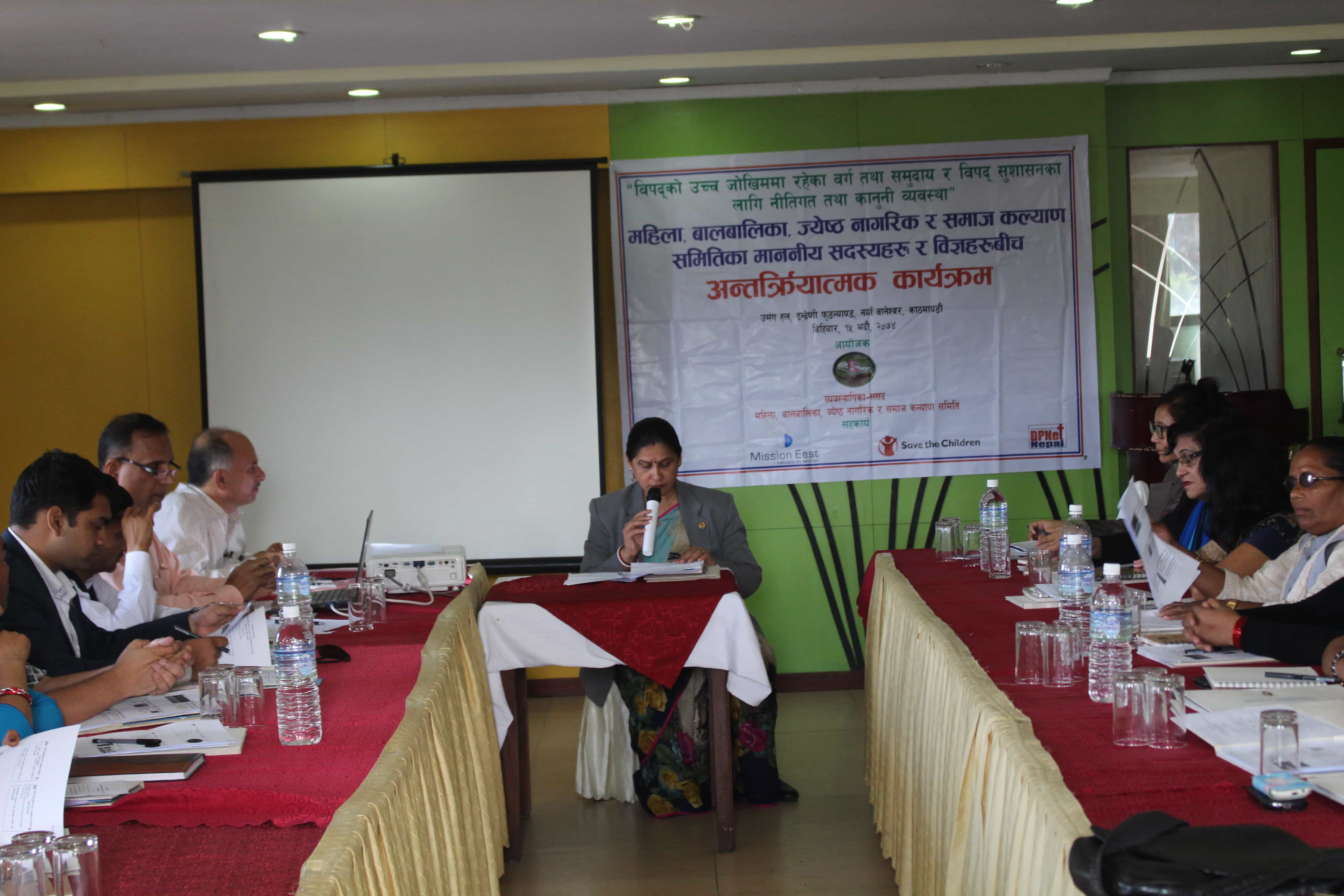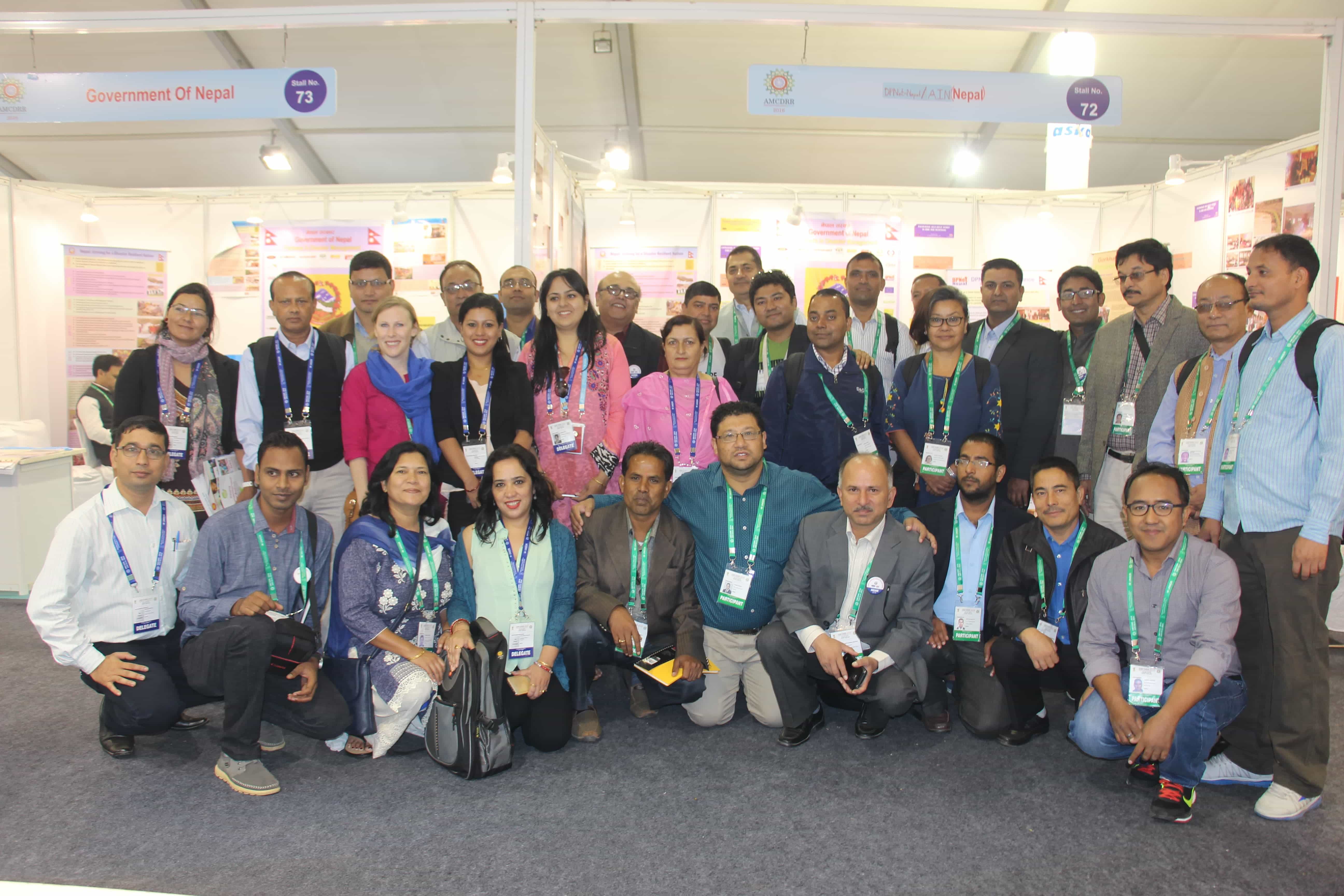Orientation to the Journalist on Hydro-meteorological Forecast System
Jun 26, 2022
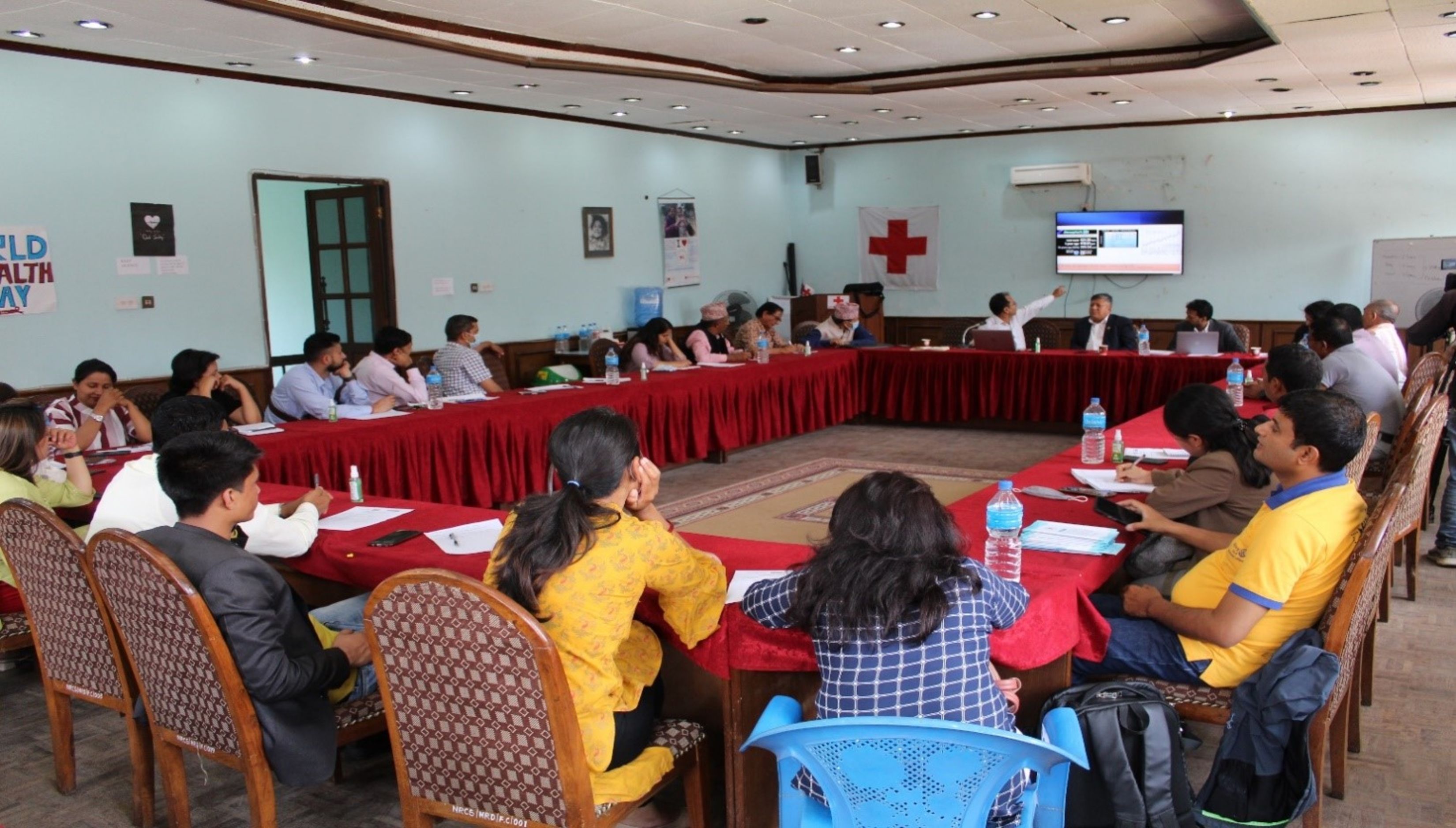
The Orientation to the Journalists on “Hydro-meteorological Forecast System” was organized by DPNet Nepal on 19th June, 2022 at Nepal Red Cross Sabha Hall, Kathmandu. The program was Chaired by Dr. Raju Thapa, Acting Chairperson of DPNet. Whereas the Chief Guests of the program was Dr. Gangalal Tuladhar, Former Education Minister and DRR&M Expert.
Major Highlights:
Ms. Krishna Poudyal, Editor of News Agency Nepal – Role of Media in EWS
Early warning systems (EWS) should aim to integrate the concerns of local people and should be cultural, linguistic, social and gender inclusive. EWS must generate and disseminate data timely and provide meaningful warning information on a community driven approach where collection and analysis of information should be led by community people. The information of EWS are shared through weekly bulletins by NDRRMA, mobile SMS, samudayik radio and so on. Media is the main source of information dissemination so the program has contributed to the understanding of journalists about hydro-meteorological forecasting.
There is the importance of effective management of information through media about
Major Highlights:
Ms. Krishna Poudyal, Editor of News Agency Nepal – Role of Media in EWS
Early warning systems (EWS) should aim to integrate the concerns of local people and should be cultural, linguistic, social and gender inclusive. EWS must generate and disseminate data timely and provide meaningful warning information on a community driven approach where collection and analysis of information should be led by community people. The information of EWS are shared through weekly bulletins by NDRRMA, mobile SMS, samudayik radio and so on. Media is the main source of information dissemination so the program has contributed to the understanding of journalists about hydro-meteorological forecasting.
There is the importance of effective management of information through media about
- Pressurizing the government for the formation of pre-information system policy.
- Local level sensitization for forecasting/ Nowcasting to reduce all levels of suffering.
- For the better understanding of subject matter and the importance of networking.
- Form the climate change committee at the province level and disseminate the information timely.
Dr. Jiba Raj Pokharel, Executive Member, NCDM – Cost Effective Monsoon Preparedness
This year we are anticipating above average rainfall. So, we must follow mitigating measures on hydro-metro disaster considering our indigenous knowledge and practices. Ponds also contribute to Nature Based Solutions for DRRM. The presentation included the construction of a pond and its positive impacts. The presentation was about the importance, maintenance and cost of a pond for mitigating natural calamities like floods, high temperature of weather and so on. This can also help in strengthening the living standard of the local community and fulfill the basic requirements of water for wild animals. Another important thing is that if we identify the crack and seal that crack properly, we may mitigate the risk of landslide. As landslide events are increasing day by day, we need to promote low cost landslide mitigation measures adopted by our ancestors.
Dr. Dharam R. Uprety, Thematic Lead Climate and Resilience, Practical Action – Strengthening Multi-hazard Early Warning System and Impact Based Forecasting in the face of growing impact of climate change in Nepal.
The monsoon usually starts from 23rd June to September, but this year it started a week earlier. Pre monsoon leads to flooding of roads, roads –induced disaster, water logging, water visibility and problems in visibility of air. The global temperature is rising and has increased by 2ppm CO2 concentration. This impact is seen all over the world. The direct impact is in agriculture and food security, forest, environment and watershed, public health/livestock and damaged critical infrastructure. For this, the strengthening of community based EWS, gender, disability and cultural diversity and the effective governance and institutional arrangements are very necessary. EWS is a multi-hazard approach and should focus on risk knowledge, risk monitoring, risk communication and community capacity building.
The presentation showed the glimpse of monsoon, weather, other record breaking events and now casting. Further probability of rainfall, rainfall monitoring, monsoon rain monitoring, rainfall triggering, rainfall intensity, monsoon-rainfall graphs and loss-damages were shared. It was further discussed about the impacts in roads of the Mugling area, flight visibility, landslides in rural roads, riverine flood and other cascading impacts. It is important to localize the risk communication, increase response capacity, have strong coordination between and among agencies, increase forecast based actions, build community capacity, readiness at community level and proper evacuation in safe shelter to reduce risk. Mass SMS and other communication systems contribute directly to EWS. Presentation was also focused on how to collect accurate hydro-metro related to data from various open sources in the DHM portal.
Dr. Gangalal Tuladhar, Former Education Minister and DRR & M Expert
Dr. Tuladhar for the DRRM gave a compliment for EWS as “Manav Mahapunya”. The initiation for DRRM should be highlighted as the first priority. The DRRM is the combination of the powers from Nepalese constitution and compromise of all the persons in the policy endorsement for its implementation. Media and journalists should understand the importance of risk communication as they are the strong channel for information dissemination.
Open Discussion
Dr. Meen B. Poudyal Chhetri, NCDM
In the context of Nepal, where there is no satellite for accurate weather forecasting, it’s a big challenge to harness real data for precise forecasting. The major issues are urban flooding, concrete construction and so on. The DRRM act must be amended and a separate autonomous entity for DRR should be established.
Mr. Sudarshan Sigdel, Editor, Aajko Shikshya Weekly
As the climate change concept is vague, it is hard to recognize the types of soil that absorbs or promotes to cause the disaster in the shape of flood.
Mr. Om Prakash Ghimire, NPDRR Media Group, Coordinator, Netizen Media
The search and dissemination of the accurate information becomes a challenge for the media/journalist due to low advocacy and insufficient human resources. There is a weather studio in Nepal but it is not operating.
Mr. Pallav Pant, Chairperson, Atullya Foundation Pvt. Ltd.
The stands for PWD in DRR is important for the effective mitigation of DRR. The government also should focus on these initiations and should endorse the special resource allocation and provision for the various subjects.
Mr. Sunil Sun Shakya, DRR Expert, NDRC
The word ‘preparedness’ should be replaced by ‘prevention mitigation’ since there is no evidence of risk reduction by preparedness only.
Mr. Ram Prasad Bhattarai, Executive Member, DPNet-Nepal
The Media group should be oriented and accumulated from local and province level to contribute to DRR. The good initiation also should be from DPNet-Nepal itself.
Closing Remarks
Dr. Raju Thapa, Acting Chair, DPNet-Nepal
Talking about the resources on DRR, Dr. Thapa has reminded the Online Resource Centre (ORC) that DPNet-Nepal’s website has. He then introduced some of the related documents linked to the media. He shows his heartfelt gratitude to all the major participants of Media personnel and the presenters. He shared that the discussion program sensitized media personnel to harness real data for precise monsoon forecasting. As demanded by participants, he committed to organize a day-long program to orient media personnel to make them familiar with open source hydr-metro online data for precise forecasting. He also committed to organize such programs at provincial levels.
This year we are anticipating above average rainfall. So, we must follow mitigating measures on hydro-metro disaster considering our indigenous knowledge and practices. Ponds also contribute to Nature Based Solutions for DRRM. The presentation included the construction of a pond and its positive impacts. The presentation was about the importance, maintenance and cost of a pond for mitigating natural calamities like floods, high temperature of weather and so on. This can also help in strengthening the living standard of the local community and fulfill the basic requirements of water for wild animals. Another important thing is that if we identify the crack and seal that crack properly, we may mitigate the risk of landslide. As landslide events are increasing day by day, we need to promote low cost landslide mitigation measures adopted by our ancestors.
Dr. Dharam R. Uprety, Thematic Lead Climate and Resilience, Practical Action – Strengthening Multi-hazard Early Warning System and Impact Based Forecasting in the face of growing impact of climate change in Nepal.
The monsoon usually starts from 23rd June to September, but this year it started a week earlier. Pre monsoon leads to flooding of roads, roads –induced disaster, water logging, water visibility and problems in visibility of air. The global temperature is rising and has increased by 2ppm CO2 concentration. This impact is seen all over the world. The direct impact is in agriculture and food security, forest, environment and watershed, public health/livestock and damaged critical infrastructure. For this, the strengthening of community based EWS, gender, disability and cultural diversity and the effective governance and institutional arrangements are very necessary. EWS is a multi-hazard approach and should focus on risk knowledge, risk monitoring, risk communication and community capacity building.
The presentation showed the glimpse of monsoon, weather, other record breaking events and now casting. Further probability of rainfall, rainfall monitoring, monsoon rain monitoring, rainfall triggering, rainfall intensity, monsoon-rainfall graphs and loss-damages were shared. It was further discussed about the impacts in roads of the Mugling area, flight visibility, landslides in rural roads, riverine flood and other cascading impacts. It is important to localize the risk communication, increase response capacity, have strong coordination between and among agencies, increase forecast based actions, build community capacity, readiness at community level and proper evacuation in safe shelter to reduce risk. Mass SMS and other communication systems contribute directly to EWS. Presentation was also focused on how to collect accurate hydro-metro related to data from various open sources in the DHM portal.
Dr. Gangalal Tuladhar, Former Education Minister and DRR & M Expert
Dr. Tuladhar for the DRRM gave a compliment for EWS as “Manav Mahapunya”. The initiation for DRRM should be highlighted as the first priority. The DRRM is the combination of the powers from Nepalese constitution and compromise of all the persons in the policy endorsement for its implementation. Media and journalists should understand the importance of risk communication as they are the strong channel for information dissemination.
Open Discussion
Dr. Meen B. Poudyal Chhetri, NCDM
In the context of Nepal, where there is no satellite for accurate weather forecasting, it’s a big challenge to harness real data for precise forecasting. The major issues are urban flooding, concrete construction and so on. The DRRM act must be amended and a separate autonomous entity for DRR should be established.
Mr. Sudarshan Sigdel, Editor, Aajko Shikshya Weekly
As the climate change concept is vague, it is hard to recognize the types of soil that absorbs or promotes to cause the disaster in the shape of flood.
Mr. Om Prakash Ghimire, NPDRR Media Group, Coordinator, Netizen Media
The search and dissemination of the accurate information becomes a challenge for the media/journalist due to low advocacy and insufficient human resources. There is a weather studio in Nepal but it is not operating.
Mr. Pallav Pant, Chairperson, Atullya Foundation Pvt. Ltd.
The stands for PWD in DRR is important for the effective mitigation of DRR. The government also should focus on these initiations and should endorse the special resource allocation and provision for the various subjects.
Mr. Sunil Sun Shakya, DRR Expert, NDRC
The word ‘preparedness’ should be replaced by ‘prevention mitigation’ since there is no evidence of risk reduction by preparedness only.
Mr. Ram Prasad Bhattarai, Executive Member, DPNet-Nepal
The Media group should be oriented and accumulated from local and province level to contribute to DRR. The good initiation also should be from DPNet-Nepal itself.
Closing Remarks
Dr. Raju Thapa, Acting Chair, DPNet-Nepal
Talking about the resources on DRR, Dr. Thapa has reminded the Online Resource Centre (ORC) that DPNet-Nepal’s website has. He then introduced some of the related documents linked to the media. He shows his heartfelt gratitude to all the major participants of Media personnel and the presenters. He shared that the discussion program sensitized media personnel to harness real data for precise monsoon forecasting. As demanded by participants, he committed to organize a day-long program to orient media personnel to make them familiar with open source hydr-metro online data for precise forecasting. He also committed to organize such programs at provincial levels.
